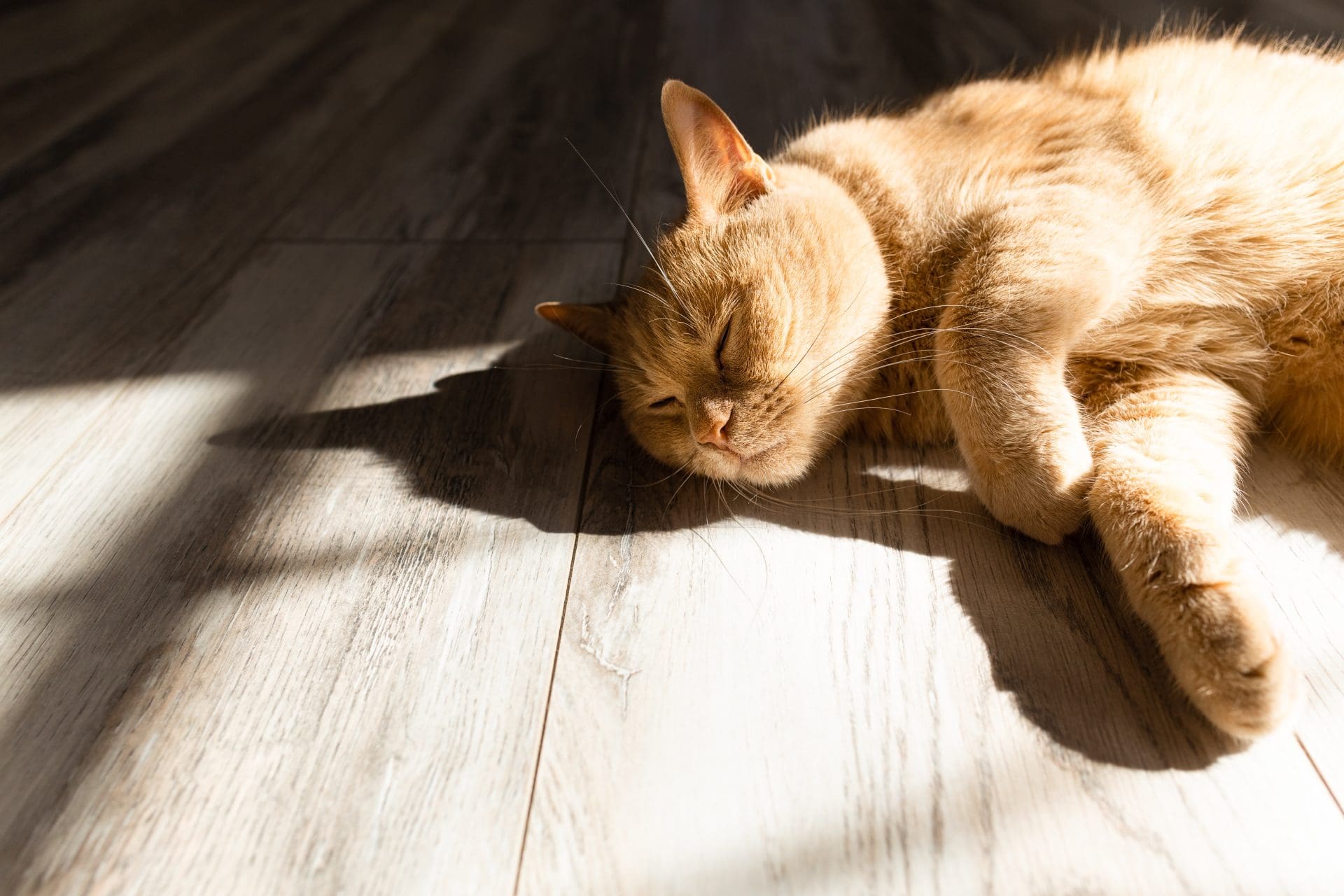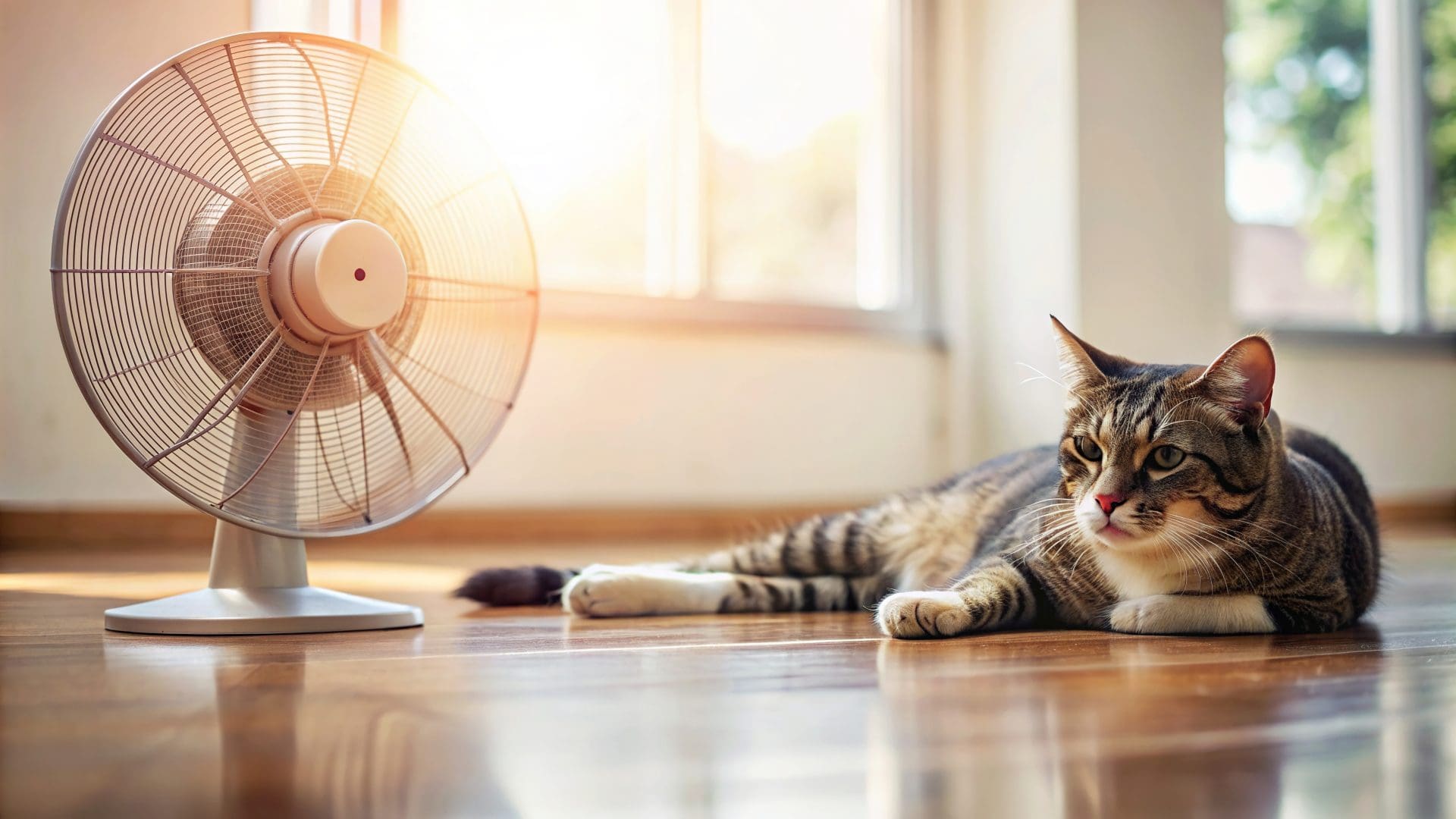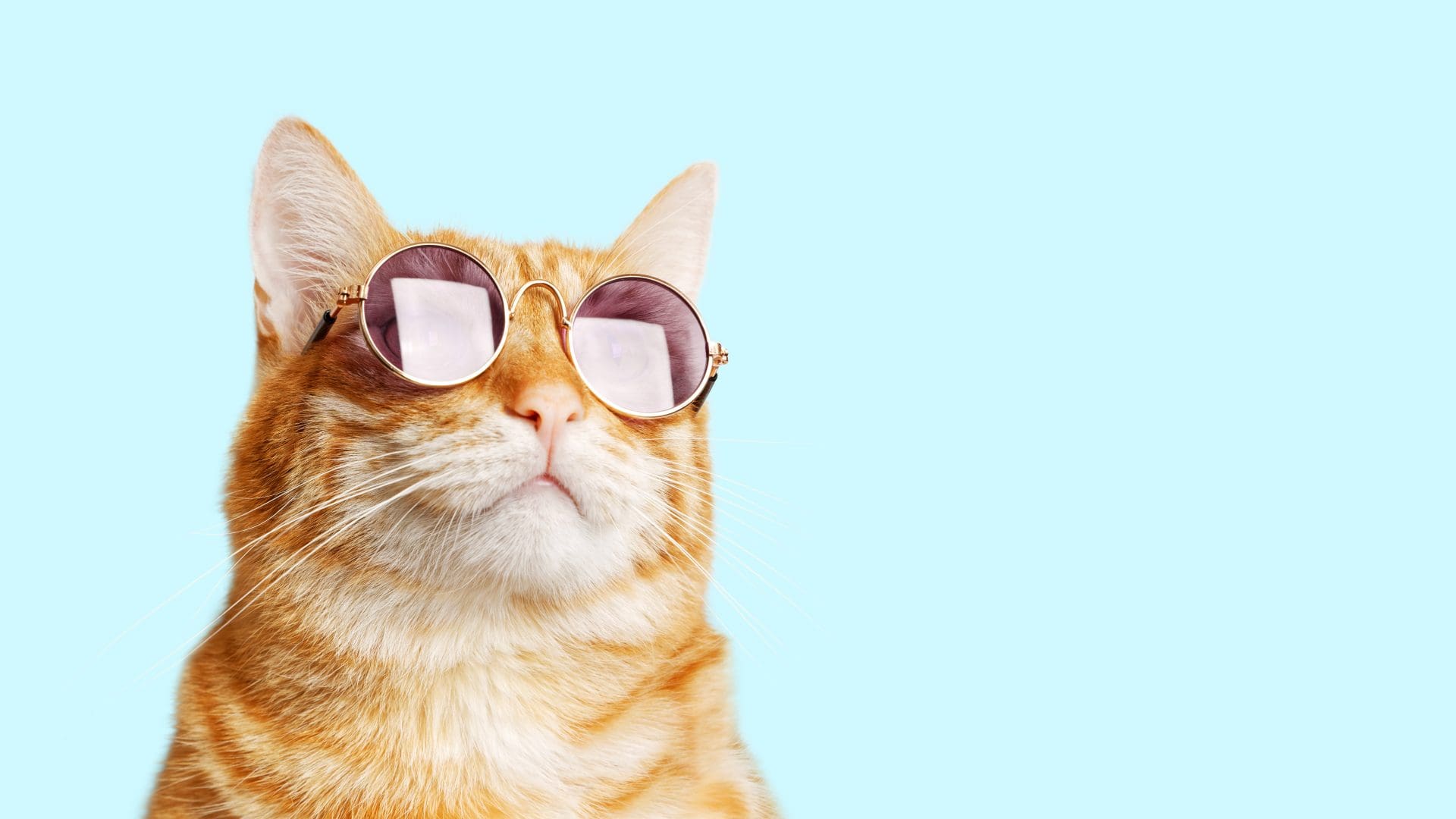As temperatures soar, our feline friends face the risk of heatstroke, a potentially life-threatening condition. It’s crucial for pet owners to recognize cat heatstroke symptoms and understand how to respond effectively. This guide from Spall and Harvey Animal Hospital will help you identify and treat heatstroke in cats, ensuring their safety during the warmer months.
What Are the Symptoms of Heatstroke in Cats?
Identifying heatstroke symptoms in cats early can save lives. Common signs include:
- Panting
- Drooling
- Lethargy
- Vomiting
- Red or pale gums
- Rapid heartbeat
- Weakness or staggering
If you observe these sick cat symptoms, immediate action is necessary.
What Temperature is Too Hot for Cats?

Cats can generally stand temperatures of up to 90°F (32°C), but anything above this can pose a risk. Especially in high humidity, it can become difficult for cats to regulate their body temperature, leading to heatstroke in cats. Providing a cool environment is essential to prevent your cat from becoming unwell.
How Quickly Can Heatstroke Develop in Cats?
Heatstroke in cats can develop rapidly, within 15 minutes of exposure to extreme heat. Always monitor your cat closely during hot weather and take preventive measures.
What is the Difference Between Heatstroke and Overheating?
Overheating occurs when a cat’s body struggles to cool down, often seen as excessive panting or restlessness. Heatstroke, however, is a severe escalation where the body’s temperature exceeds 104°F (40°C), leading to potential organ failure. Recognizing the difference between overheating and heatstroke can be vital in providing timely care.
How Can I Tell if My Cat is Overheating?
Overheating in cats can be subtle at first. Watch for these unwell cat symptoms:
- Restlessness
- Panting
- Increased grooming (to cool themselves)
- Seeking cool areas
Early intervention can prevent the progression to heatstroke.
How Do You Treat an Overheating Cat?

If you notice your cat is overheating, follow these steps:
- Move them to a cooler area.
- Offer fresh, cool water.
- Use a damp cloth to gently moisten their fur.
- Avoid ice or very cold water, as this can cause shock.
By cooling your cat gradually, you can prevent heatstroke symptoms in cats from developing.
How Do You Treat a Cat with Heatstroke?
Heatstroke in cats is a medical emergency. Follow these steps:
- Immediate Cooling: Move your cat to a cool area and wet their fur with lukewarm water.
- Seek Veterinary Care: Contact Spall and Harvey Animal Hospital or your nearest vet immediately.
- Monitor Vital Signs: Keep track of your cat’s temperature, aiming to bring it down to 103°F (39.4°C).
Professional veterinary care is crucial in managing cat heatstroke to prevent long-term damage or fatality.
How Do You Keep a Cat Cool in the Warmer Months?

Preventing heatstroke in cats starts with keeping them cool:
- Provide Shade: Ensure your cat has access to shaded areas both indoors and outdoors.
- Hydration: Always have fresh, cool water available.
- Limit Sun Exposure: Avoid letting your cat outdoors during peak heat hours.
- Cool Areas: Create cool spots at home with fans or air conditioning.
- Grooming: Regular brushing can help remove excess fur, allowing better heat dissipation.
By taking these steps, you can minimize the risk of heatstroke symptoms in cats.
What Long-Term Effects Can Heatstroke Have on Cats?
If not treated promptly, heatstroke can lead to organ damage, neurological issues, and in severe cases, death. Swift veterinary intervention is crucial to minimize long-term damage.
Heatstroke in cats is a serious condition that requires immediate attention. By understanding the cat heatstroke signs and cat heatstroke treatment, you can protect your feline friend from the dangers of overheating. At Spall and Harvey Animal Hospital, we are committed to providing the best care for your pets, ensuring their safety and well-being during the hot summer months. Stay vigilant, keep your cats cool, and always seek veterinary advice if you suspect heatstroke.
